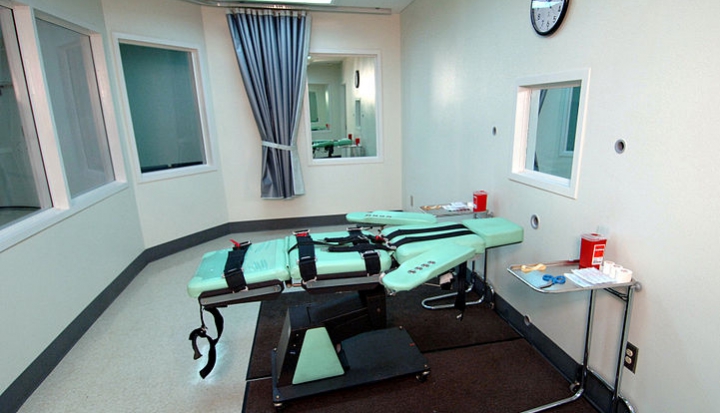As if the execution of Ohio inmate Dennis McGuire last January was not unbearable enough, Oklahoma executed Clayton Lockett yesterday using the same cocktail drug that caused McGuire to gasp and convulse for 10 minutes before dying.
Lockett was alive for an excruciating 43 minutes after being given the first of three drugs to kill him. During this time, onlookers heard Lockett say the words “Man” and “I’m not.” A prison official said, “Something’s wrong.” When Lockett lifted his head to look around, everyone knew something was horribly wrong. The blinds were closed to block the view of the onlookers.
Dean Sanderford, Lockett’s attorney said, “The convulsing got worse. It looked like his whole upper body was trying to lift off the gurney. For a minute, there was chaos.”
“There was some concern at that time that the drugs were not having the effect,” said Oklahoma Department of Corrections Director Robert Patton. “So the doctor observed the line and determined that the line had blown.” He added that Lockett’s vein had “exploded.” At this point, there was an order to halt the execution, but Lockett died of a massive heart attack.
“We have a fundamental standard in this country that even when the death penalty is justified, it must be carried out humanely—and I think everyone would recognize that this case fell short of that standard,” White House spokesman Jay Carney said Wednesday.
Is there truly a humane way to take a life? No. The execution of Lockett was the case in point. Torture. Cruel and unusual punishment. He was the 20th person executed in 2014.
One aspect in particular of this whole event that has stuck with me—although I am sure the rest will resonate in my mind for a long time—is the fact that the blinds were closed so that the public could not witness the botched execution.
Last night I attended a discussion with author and anti-death penalty activist Sister Helen Prejean at the Harold Washington Library here in downtown Chicago. Sister Helen spoke of her journeys with seven men on death row. She told us that most executions take place in the middle of the night and behind closed doors. She argued that the best way to persuade the public to stand against capital punishment is to have them witness an execution for themselves—although some say that this would only cause a coarsening effect among people. She has even gone so far in the past as to suggest executions be aired on national television.
The onlookers at Lockett’s execution were not given the opportunity to witness the pain and agony they were inflicting on a human being. They were not allowed to see him struggle to sit up, to see the vein explode, to see him suffer a heart attack. The onlookers got their justice, but Lockett received none. All human beings—whether guilty or innocent—deserve dignity.
The good news is that a recent Pew Research Center polls shows that the percentage of U.S. adults in favor of the death penalty is decreasing and states are continuing to abolish it. However we still have a long ways to go before it is abolished everywhere once and for all.
For more reading, visit these sites:
Oklahoma Vows Review of Botched Execution, New York Times
Let’s Stop Pretending the Death Penalty Is a Medical Procedure [Editorial], Scientific American
Witnesses to a Botched Execution, The New Yorker
Image: Wikimedia Commons cc by CACorrections













